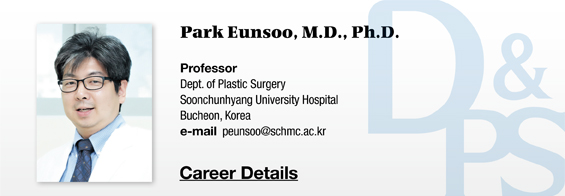▶ Previous Artlcle : #10-2. Platelet Rich Fibrin and Platelet Poor Plasma
In this article, we will take a look at dermal fibroblasts. Throughout life, we are bound to get injured every now and then. If the human tissue does not have the ability to regenerate or heal, no one could survive even from a slight injury. The consequence of wound healing is scar. Often, a wound results in a small scar but in less fortunate cases, a more conspicuous one.
[Advertisement] Ultra Skin/Pastelle – Manufacturer: WONTECH(www.wtlaser.com)
A century ago, complications or scarring following trauma were thought unavoidable. However, as more is known about the process of wound healing, complications or scarring became less common. Discovering the factors that contribute to the mechanism of wound healing and applying them to treatment will enhance the healing process as well as prevent infection, incomplete healing, and severe scarring, etc. Therefore, knowledge of the wound healing process and enhancement of this process are crucial to not only recovery and success of aesthetic procedures but also skin regeneration as well.
When tissue damage occurs, the normal biorhythm is broken and this immediately triggers the healing response. The wound healing process is divided into four phases; inflammatory, epithelization, proliferative, and maturation. These stages are not clear-cut and overlap with each other in a continuum of the process.
The inflammatory response winds down in 2-4 days after sustaining a wound. During this time, mesenchymal cells migrate to the wounded tissue and angiogenesis is triggered. Fibroblasts synthesize collagen fiber here. This phase is called the proliferative phase and is also called fibroblastic phase or, dermis phase.
In general, the proliferative phase begins 5-7 days after sustaining a wound and continues for 2-3 weeks. During this period, the wound is filled with new connective tissues known as granulation tissues. In other words, during the inflammatory phase, the wound is cleared of debris, capillary buds infiltrate the wound and fibroblasts gather. When the proliferative phase begins, the migrated fibroblasts synthesize collagen fiber, the main ingredient of connective tissue, and gives the damaged tissues tensile strength. Connective tissues, one of the most important components of the human body, consist of four basic materials; collagen fiber, elastic fiber, proteoglycan, and glycoprotein.
Collagen, the main ingredient of connective tissues, gives the human tissues tensile strength. It facilitates physiological functions of collagen-rich tissues such as skin, tendons, face, bone and blood vessels. Collagen accounts for 70-80% of the dry weight of dermis. Type I and III collagen are major components of the human dermis and type I takes up 80% of all collagen and type III 15%. Winkles arise from the imbalance between synthesis and break-down of collagen. In normal skin, type I collagen synthesis and collagenase MMP-1 exist in balance. But in photo-aged skin, the synthesis of type I, III collagen is impeded and MMP-1 is activated. In addition, as skin ages, various types of metabolic activities decline and cellular activity is reduced. Processes following collagen synthesis and collagen transcription also decline due to aging. Growth factors such as transforming growth factor-β (TGF-β), epidermal growth factor (EGF), and fibroblast growth factor (FGF) are also reduced due to aging. The dermis becomes thinner and drier with decreased connective tissues and creates the atrophied, wrinkled appearance.
-To be continued-
▶ Next Artlcle : #11-2. Dermal Fibroblasts





















